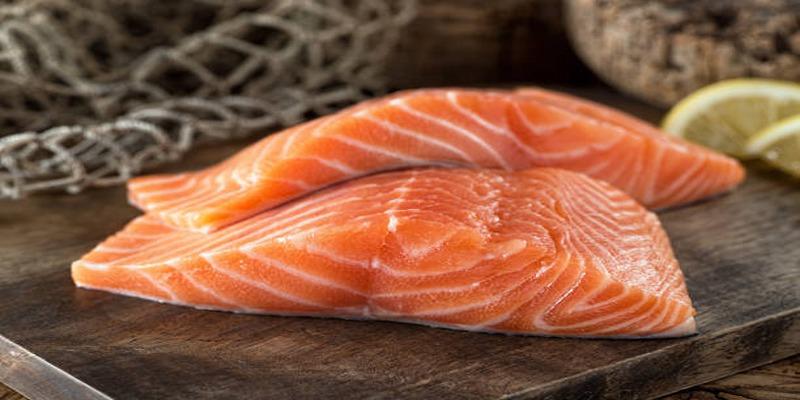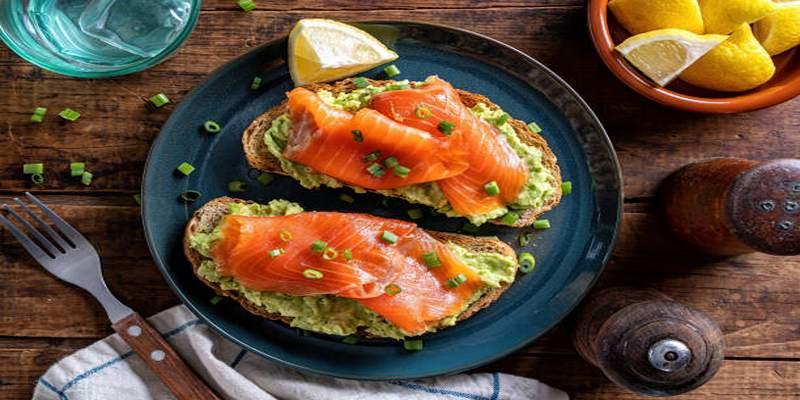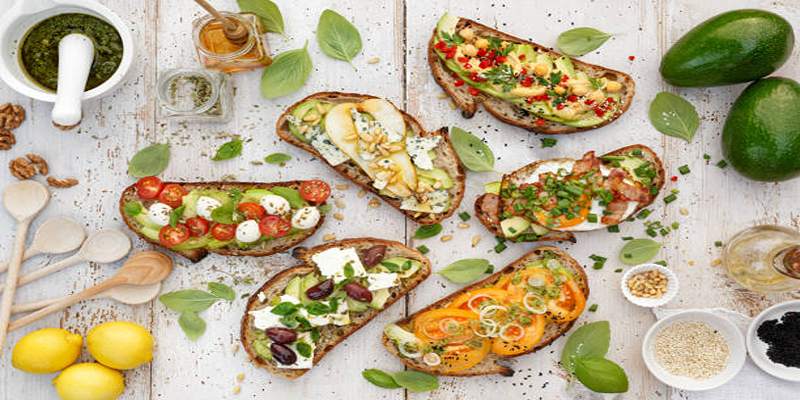Cooking salmon is a skill that combines precision with creativity, yielding delicious results that can delight any palate. As one of the most versatile and nutritious fish, salmon offers an impressive array of culinary possibilities, from simple grilled fillets to intricate gourmet dishes. This guide aims to demystify the process of preparing salmon, providing you with essential techniques, tips, and recipes to master this succulent protein. Whether you are a seasoned chef or a home cook taking your first steps into seafood cuisine, this comprehensive resource is designed to elevate your salmon-cooking skills. By exploring the different methods of cooking salmon, understanding the best practices for seasoning and pairing, and learning how to select the freshest fish, you will be well-equipped to create meals that are both flavorful and healthy. Embrace the art of cooking salmon and discover the joy of serving expertly crafted dishes to your family and friends.
Selecting the Freshest Salmon
When it comes to mastering salmon, the journey begins with selecting the freshest fish.
Recognizing Fresh Salmon
Fresh salmon should exhibit a vibrant color, whether it's the rich red of wild-caught varieties or the deeper pink of farm-raised options. The flesh should be firm to the touch and spring back when pressed gently. Additionally, fresh salmon should emit a slightly briny aroma, reminiscent of the ocean, without any off-putting fishy smell. Look for fillets or whole fish with bright, clear eyes and moist, shiny skin, indicators of quality and freshness.
Understanding Different Cuts
Salmon can be purchased in a variety of cuts, each suitable for different cooking methods. Fillets are the most common and versatile, perfect for grilling, baking, or pan-searing. Steaks, which include the bone, offer a heartier option ideal for grilling. Whole salmon, though more challenging to prepare, provides a dramatic presentation and is excellent for roasting or smoking. Knowing the best cut for your chosen cooking technique can enhance the final dish's texture and flavor.
Importance of Sourcing
Where your salmon comes from significantly impacts its taste and sustainability. Wild-caught salmon, harvested from their natural habitats, typically contains higher levels of beneficial omega-3 fatty acids and offers a robust flavor profile. However, sustainably farmed salmon can be an excellent alternative, often more accessible and with a consistent taste. Researching and choosing reputable sources is key to ensuring the quality and environmental impact of your salmon dishes.
Storing Fresh Salmon
To maintain the freshness of your salmon until you're ready to cook, proper storage is essential. If you plan to use it within a day or two, keep the salmon on a plate covered with plastic wrap in the coldest part of your refrigerator. For longer storage, freezing is the best option. Wrap the salmon tightly in plastic wrap or aluminum foil, followed by a layer of freezer paper or a re-sealable plastic bag. Properly stored, salmon can retain its quality in the freezer for up to three months.
Essential Tools for Perfect Salmon
To achieve perfectly cooked salmon, having the right tools at your disposal is crucial. Here are the essential tools you will need:
- Sharp Chef's Knife: A high-quality chef's knife is indispensable for filleting and portioning salmon. It ensures clean, precise cuts that retain the fish's texture and integrity, making it easier to prepare uniform pieces for even cooking.
- Fish Tweezers: These tweezers are designed specifically for removing the pin bones from salmon fillets. Their tapered tips provide a secure grip, allowing you to extract bones without tearing the delicate flesh.
- Non-Stick Pan: For pan-searing salmon, a non-stick pan is ideal. It allows you to cook the salmon at high heat without sticking and ensures an even, golden-brown crust on the exterior while keeping the interior moist and tender.
- Grill Basket: When grilling salmon, a grill basket can be incredibly useful. It holds the fish securely, preventing it from flaking apart while cooking and making it easy to flip without breaking the delicate fillets.
- Digital Meat Thermometer: Cooking salmon to the perfect doneness is key, and a digital meat thermometer helps achieve this by providing accurate temperature readings. This ensures the fish is cooked through without becoming dry, maintaining its succulent texture.
- Parchment Paper: For baking or steaming salmon, parchment paper is a must-have. It prevents the fish from sticking to the baking sheet or steamer and allows for even heat distribution, resulting in tender and flavorful dishes.
- Fish Spatula: A fish spatula is designed to be thin and flexible, making it perfect for lifting and flipping delicate salmon fillets without breaking them. Its slotted design also allows excess oil or sauce to drain away.
Preparing Your Salmon for Cooking
Before you begin cooking, it's essential to prepare your salmon correctly. If you're working with skin-on salmon, consider making a few shallow slits in the skin to prevent it from curling up during cooking. Season your salmon generously with salt and pepper, or opt for a marinade to infuse additional flavors. Remember to let the salmon rest at room temperature for about 15 minutes before cooking to ensure even heat distribution.
Techniques for Cooking Salmon
Cooking salmon to perfection involves mastering various techniques, each offering distinct textures and flavors.
Pan-Seared Salmon
Pan-searing is one of the quickest and simplest ways to cook salmon, providing a crispy skin and tender interior. Start by heating a small amount of oil in a non-stick or cast-iron pan over medium-high heat. Once the oil is shimmering, place the salmon fillets skin-side down in the pan. Cook for 4 to 5 minutes, pressing down gently with a spatula for even cooking. Flip the fillet and cook for an additional 3 to 4 minutes, until the fish flakes easily with a fork. Ensure you do not overcrowd the pan to allow proper heat circulation.
Baked Salmon
Baking is a less hands-on method that ensures an even cook throughout the salmon. Preheat your oven to 400F (200C). Place the salmon fillets on a baking sheet lined with parchment paper or aluminum foil. Season as desired and optionally add ingredients like lemon slices, garlic, and herbs for additional flavor. Bake for 12 to 15 minutes, or until the internal temperature hits 145F (63C). This method is particularly great for cooking larger quantities and pairs well with a variety of side dishes.
Grilled Salmon
Grilling imparts a smoky flavor to the salmon and is perfect for outdoor cooking. Preheat the grill to medium-high heat and lightly oil the grates to prevent sticking. Place the salmon fillets skin-side up on the grill and cook for about 4 to 5 minutes per side, depending on the thickness of the fish. For added flavor, you can use a cedar plank to grill the salmon, which also helps to prevent the fish from sticking and breaking apart. Keep an eye on the grill to avoid overcooking.
Poached Salmon
Poaching is a delicate method that results in a soft, moist texture. Fill a deep skillet or saucepan with enough water to submerge the salmon fillets completely. Add aromatics such as lemon slices, dill, bay leaves, and peppercorns to the water. Bring the water to a simmer over medium heat, then gently lower the salmon into the liquid. Poach for 10 to 15 minutes, or until the salmon is opaque and flakes easily with a fork. This technique is excellent for preserving the salmon's natural flavors and is often used in recipes like salmon salads or cold appetizers.
Pairing Salmon with Sides and Sauces
Complementing your salmon with the right sides and sauces can elevate your meal from good to extraordinary. Light, fresh sides like asparagus, quinoa, or mixed green salads balance the richness of the fish. Sauces are another key component; a dill and lemon cream sauce can add a tangy zest, while a soy-ginger glaze brings an Asian flair. Customizing your side dishes and sauces allows you to tailor the meal to your taste and create a harmonious dining experience.
Conclusion
Mastering the art of cooking salmon opens up a world of culinary possibilities. Armed with the right tools and techniques, you can create a variety of mouth-watering dishes, whether you prefer the simplicity of pan-searing or the aromatic delight of poaching. Remember, the key to perfect salmon lies in careful preparation and attentive cooking, ensuring that you preserve its tender, flaky texture and rich flavor. Pairing your salmon with the right sides and sauces can further enhance your dining experience, making each meal a memorable one. By incorporating these tips and techniques into your cooking repertoire, you'll be well on your way to becoming a salmon connoisseur. Enjoy the journey and the delicious dishes you'll create along the way!




